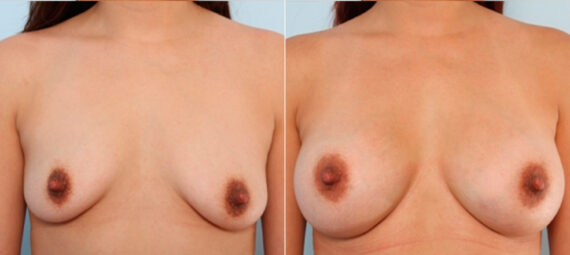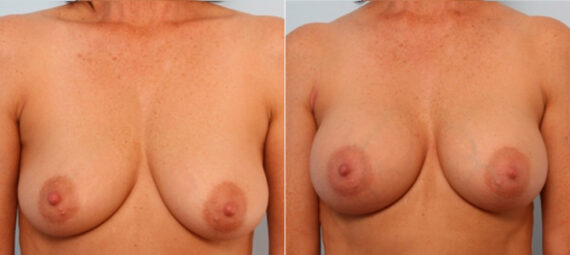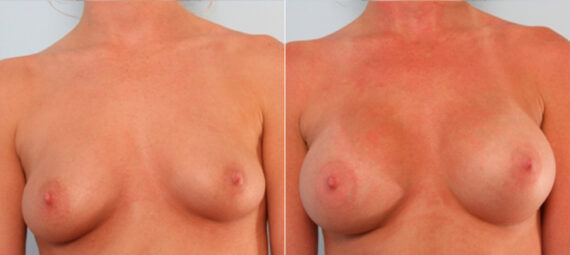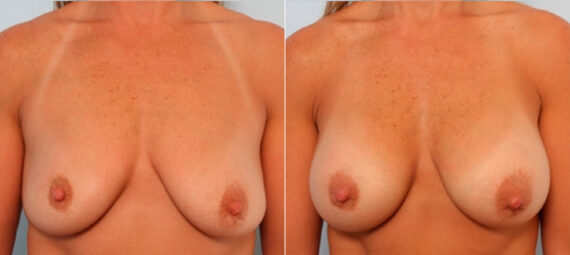Do You Have Asymmetrical Breasts? Here’s What You Can Do
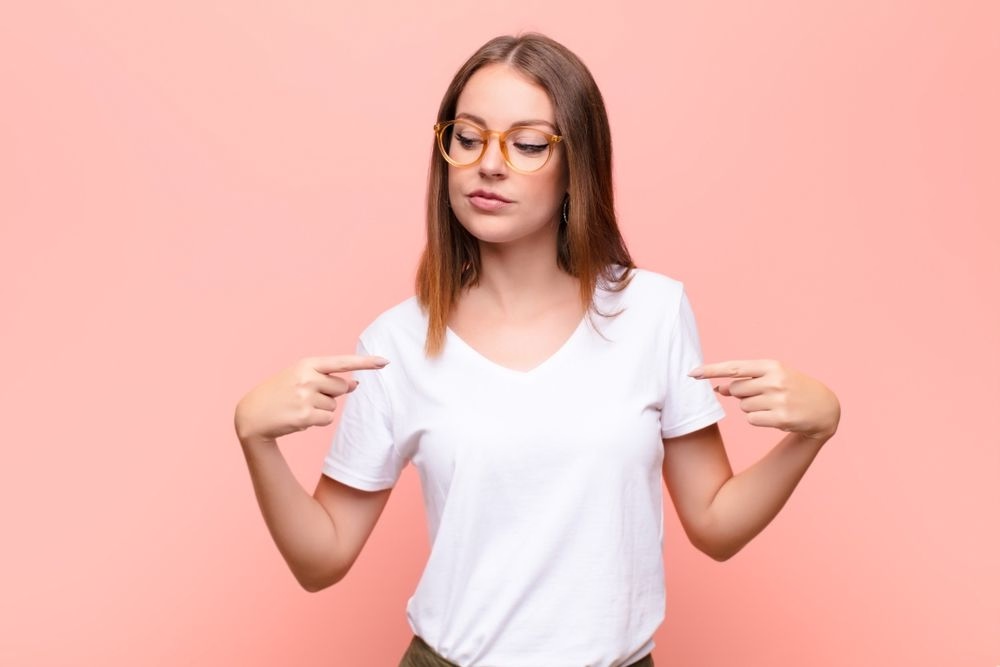
Most people have two of several different body parts: two eyes, two feet, two hands, and two breasts. It’s only natural to assume that each pair would be a matched set, equal in size or shape.
In fact, this isn’t completely true–there’s usually always at least a little difference between matched features. No one’s features are ever completely symmetrical. Still, the differences are usually too small to see, unless you’re really looking hard for them.
That’s not always the case, though. Some people find that their feet are completely different sizes while others notice a significant difference in the size of their hands, with one being bigger than the other. Breasts can also be two different sizes. In fact, it’s fairly common for women to have uneven or asymmetrical breasts. Understanding what causes the asymmetry and what your options are to deal with it can help.
What Causes Asymmetrical Breasts?
Breast asymmetry can occur for a variety of reasons. It’s also worth noting that breast asymmetry can vary in its severity. In some women, the differences in breast size might be barely perceptible. In others, the difference can be dramatic. Asymmetry can also change over time, becoming more or less noticeable over a period of years.
Some women have uneven breasts because of their genes. Asymmetry often runs in families, meaning that if your mom or grandmother had uneven breasts, then it’s very likely that you will too.
Changes in hormone levels can also affect the symmetry of the breasts. For example, some women notice that one breast becomes notably larger than the other during pregnancy. A woman might also notice a change in the symmetry of her breasts during or after menopause. Younger women going through puberty might notice that one breast starts out noticeably smaller or larger than the other. This often evens out, but not always.
Sometimes, changes to the body can make breasts more or less symmetrical. Losing or gaining weight can affect the size of the breasts, leading one to become larger or smaller than the other. An injury might also contribute to uneven breast size.
Finally, medical conditions, such as tubular breasts, can also be a cause of asymmetry.
Should You Worry About Uneven Breasts?
Asymmetry in the breasts is common enough that it’s usually not a major cause for concern. You might feel self-conscious about your breasts, but they probably aren’t posing any danger to you.
There is one thing to take note of, though. If you notice a sudden change in one breast that can’t be explained by pregnancy, menstruation or weight loss, you might want to see a doctor.
Changes in one or both breasts, including a change in size, color, or texture of the skin, could be a sign of breast cancer or a benign tumor or growth. Seeing a doctor will help you to determine what’s going on and decide on the best way to deal with it.
What You Can Do to Treat Uneven Breasts
If that is the case, patients will often need to undergo a breast lift or breast reconstruction surgery in order to restore their breasts to a more functional and aesthetically appealing position.You might find that adding padding to one bra cup is enough to bring balance to your chest area, or you might decide that the issue isn’t much of a problem after all.
But if the difference in size is notable and makes it difficult to shop for bras or clothing, then you might want to do something to correct the issue. Depending on the size of your breasts, your health, and your goals, breast augmentation surgery might be a good option.
During the breast enlargement procedure, a plastic surgeon uses synthetic implants to increase the size of one or both breasts. The size of the implants might be considerably different, depending on the level of asymmetry you are experiencing. It’s also possible (but rare) that a surgeon will place an implant in just one breast to create a balanced look.
If one breast is notably larger than the other and you would like to reduce its size to match the smaller breast, then a breast reduction might be a more appropriate option. During breast reduction for asymmetry, a plastic surgeon removes tissue from the larger breast to make it more equal in size to the other one.
In some cases, a breast lift, either with or without breast augmentation or reduction, might be helpful when it comes to correcting asymmetry. A breast lift doesn’t affect the size of the breasts. Instead, it alters their position, helping to create a more balanced, youthful look.
Can You Have Asymmetrical Breasts After Breast Augmentation?
If you’ve already had breast augmentation, then you might be surprised to discover asymmetry in your breasts at some point in the future. Developing uneven breasts in the years after breast surgery can be a sign that something has happened to the implants.
For example, if you have saline implants and one of them ruptures or starts to leak, the saline will seep out. The implant itself will shrink, making the affected breast look smaller. Although the saline will be safely absorbed by your body, you’ll still want to see a plastic surgeon to have them remove and replace the broken implant.
Uneven breasts can also develop after breast augmentation if capsular contracture develops around one of the implants. When capsular contracture occurs, the scar tissue that forms around the implant shrinks and begins to squeeze. The condition can cause discomfort and a change in the appearance of the breasts. It can be treated by cutting away the scar tissue and removing or replacing the implant.
Dr. Paul Vitenas is a board-certified plastic surgeon in Houston, Texas with nearly three decades of experience. He specializes in breast surgery and has regularly been named a Top Doctor. If you’re concerned about uneven breasts and want to learn more about your options, call 281-484-0088 schedule a consultation with Dr. Vitenas today.

